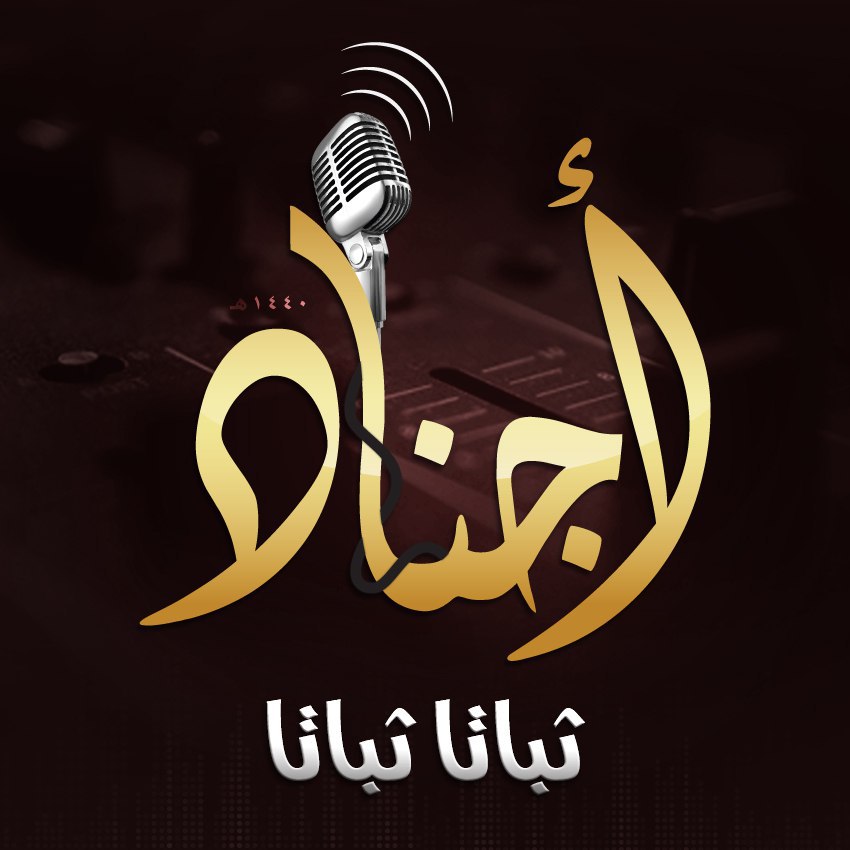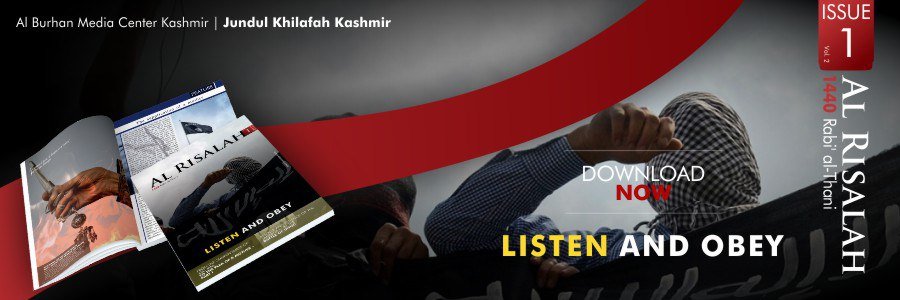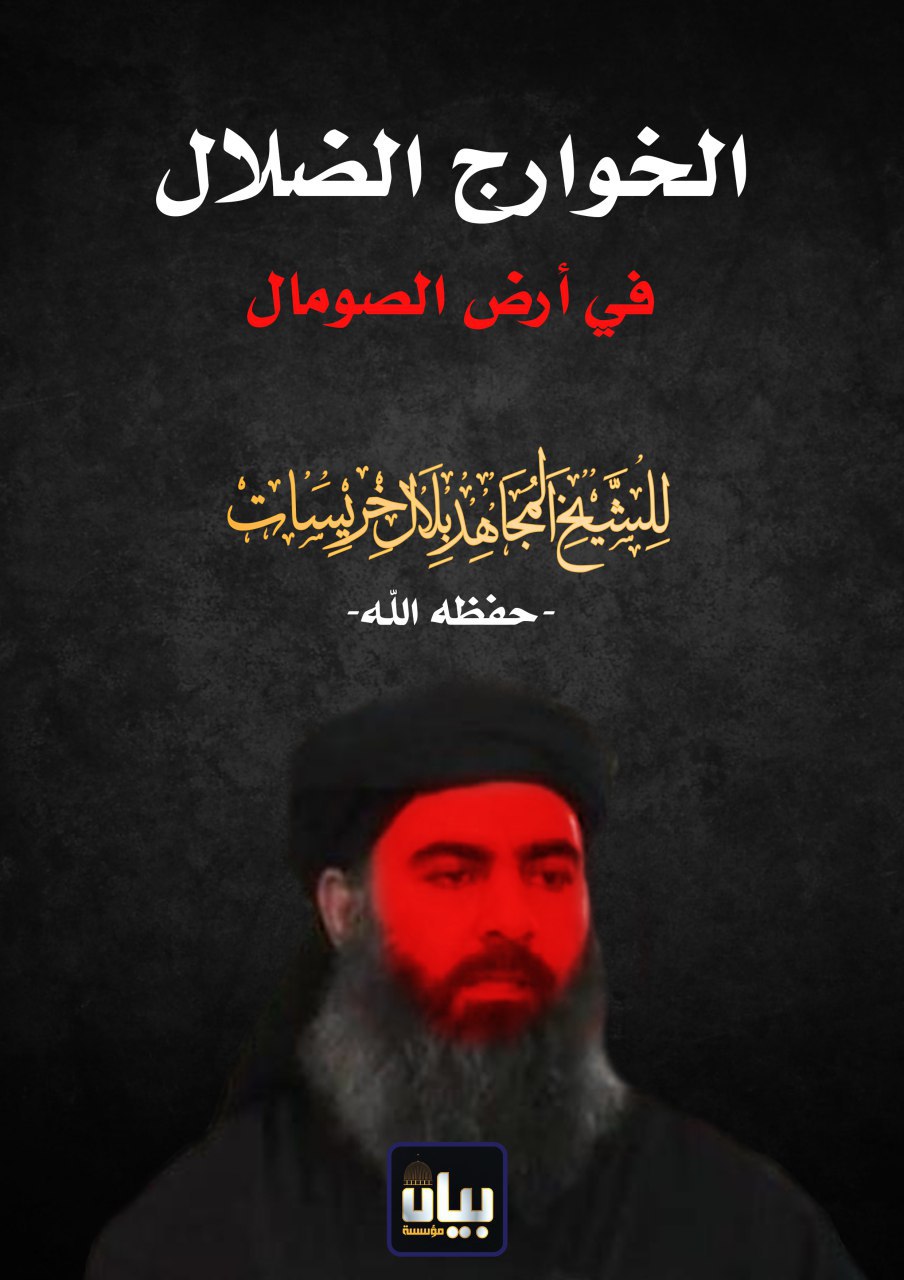
The Islamic State: “Steadfastness, Steadfastness”
____________
To inquire about a translation for this nashīd for a fee email: [email protected]

The Islamic State: “Steadfastness, Steadfastness”
____________
To inquire about a translation for this nashīd for a fee email: [email protected]

___________
For prior parts see: #162, #161, #160, #159, #158, #157, #156, #155, #154, #153, #152, #151, #150, #149, #148, #147, #146, #145, #144, #143, #142, #141, #140, #139, #138, #137, #136, #135, #134, #133, #132, #131, #130, #129, #128, #127, #126, #125, #124, #123, #122, #121, #120, #119, #118, #117, #116, #115, #114, #113, #112, #111, #110, #109, #108, #107, #106, #105, #104, #103, #102, #101, #100, #99, #98, #97, #96, #95, #94, #93, #92, #91, #90, #89, #88, #87, #86, #85, #84, #83, #82, #81, #80, #79, #78, #77, #76, #75, #74, #73, #72, #71, #70, #69, #68, #67, #66, #65, #64, #63, #62, #61, #60, #59, #58, #57, #56, #55, #54, #53, #52, #51, #50, #49, #48, #47, #46, #45, #44, #43, #42, #41, #40, #39, #38, #37, #36, #35, #34, #33, #32, #31, #30, #29, #28, #27, #26, #25, #24, #23, #22, #21, #20, #19, #18, #17, #16, #15, #14, #13, #12, #11, #10, #9, #8, #7, #6, #5, #4, #3, #2, and #1.
—

Click the following link for a safe PDF copy: The Islamic State — al-Nabā’ Newsletter #163
___________
To inquire about a translation for this newsletter issue for a fee email: [email protected]

Click the following link for a safe PDF copy: Jund al-Khilāfah in Kashmir — al-Risalah Issue #1
___________
Source: Telegram
On 27 December, IS’s al-Naba newsletter no. 162 outlined details of the group’s attack on Libya’s Foreign Ministry in Tripoli on 25 December that left three dead and twenty-one injured. The group claimed to have inflicted 31 casualties and vowed to extract revenge on those who fought against IS in Sirte.
On 23 December, thirty-four bodies of Ethiopian Christian nations killed by IS in 2016 were discovered in Sirte.
On 24 December, the Libyan National Army’s (LNA) 73 Brigade clashed with Benghazi Defence Brigades (BDB) forces in Wadi Dinar, southeast of Bani Walid. Details of causalities remain unknown at this time. However, the Municipal Council of Bani Walid has denied the presence of BDB forces in the area.A weekly update of IS’s actions, the Western response, and developments pertaining to Libya’s other militias is available by subscribing here. To read about Western countries’ responses to IS in Libya this week, click here, and to read about the developments within the anti-IS Coalition of Libyan militias, click here. To read all four sections of this week’s Eye on IS in Libya report, click here.

___________
To inquire about a translation for this video message for a fee email: [email protected]

Click the following link for a safe PDF copy: Shaykh Bilāl Khuraysāt (Abū Ḥudhayfah al-‘Urdunī) — The Kharijites Misguidance in the Land of Somalia
____________
Source: Telegram
To inquire about a translation for this release for a fee email: [email protected]
For prior parts see: #161, #160, #159, #158, #157, #156, #155, #154, #153, #152, #151, #150, #149, #148, #147, #146, #145, #144, #143, #142, #141, #140, #139, #138, #137, #136, #135, #134, #133, #132, #131, #130, #129, #128, #127, #126, #125, #124, #123, #122, #121, #120, #119, #118, #117, #116, #115, #114, #113, #112, #111, #110, #109, #108, #107, #106, #105, #104, #103, #102, #101, #100, #99, #98, #97, #96, #95, #94, #93, #92, #91, #90, #89, #88, #87, #86, #85, #84, #83, #82, #81, #80, #79, #78, #77, #76, #75, #74, #73, #72, #71, #70, #69, #68, #67, #66, #65, #64, #63, #62, #61, #60, #59, #58, #57, #56, #55, #54, #53, #52, #51, #50, #49, #48, #47, #46, #45, #44, #43, #42, #41, #40, #39, #38, #37, #36, #35, #34, #33, #32, #31, #30, #29, #28, #27, #26, #25, #24, #23, #22, #21, #20, #19, #18, #17, #16, #15, #14, #13, #12, #11, #10, #9, #8, #7, #6, #5, #4, #3, #2, and #1.
—

Click the following link for a safe PDF copy: The Islamic State — al-Nabā’ Newsletter #162
___________
To inquire about a translation for this newsletter issue for a fee email: [email protected]
On 25 December, four IS fighters undertook a suicide attack on Libya’s foreign ministry in Tripoli, killing three people and wounding at least 21 more. The assault began when a white Hyundai sedan exploded outside the ministry’s back gate, killing the driver. Two attackers died when they detonated their suicide vests on the building’s second floor while another was shot dead by security guards. IS’s Amaq website claimed responsibility for the attack on 26 December.
The three victims have been identified as: Abdulrahman Mazoughi, the spokesperson for the Tripoli Revolutionaries Brigade; Ibrahim Sheiby, director of the ministry’s Islamic Affairs Department; and Hend Arnaouti, a ministry employee.
On 20 December, twelve Egyptian children whose parents fought with IS in Sirte were handed over by authorities under the auspices of the Red Crescent to the Egyptian government. The children are aged between 5 and 14 years old.
On 19 December, the commander of the Libyan National Army’s Jabal al-Akhdat Military Region claimed that several “extremists” undertook a suicide bombing on the Port of Benghazi. Security forces responded and arrested multiple assailants. The affiliation of the attackers has not been disclosed.A weekly update of IS’s actions, the Western response, and developments pertaining to Libya’s other militias is available by subscribing here. To read about Western countries’ responses to IS in Libya this week, click here, and to read about the developments within the anti-IS Coalition of Libyan militias, click here. To read all four sections of this week’s Eye on IS in Libya report, click here.